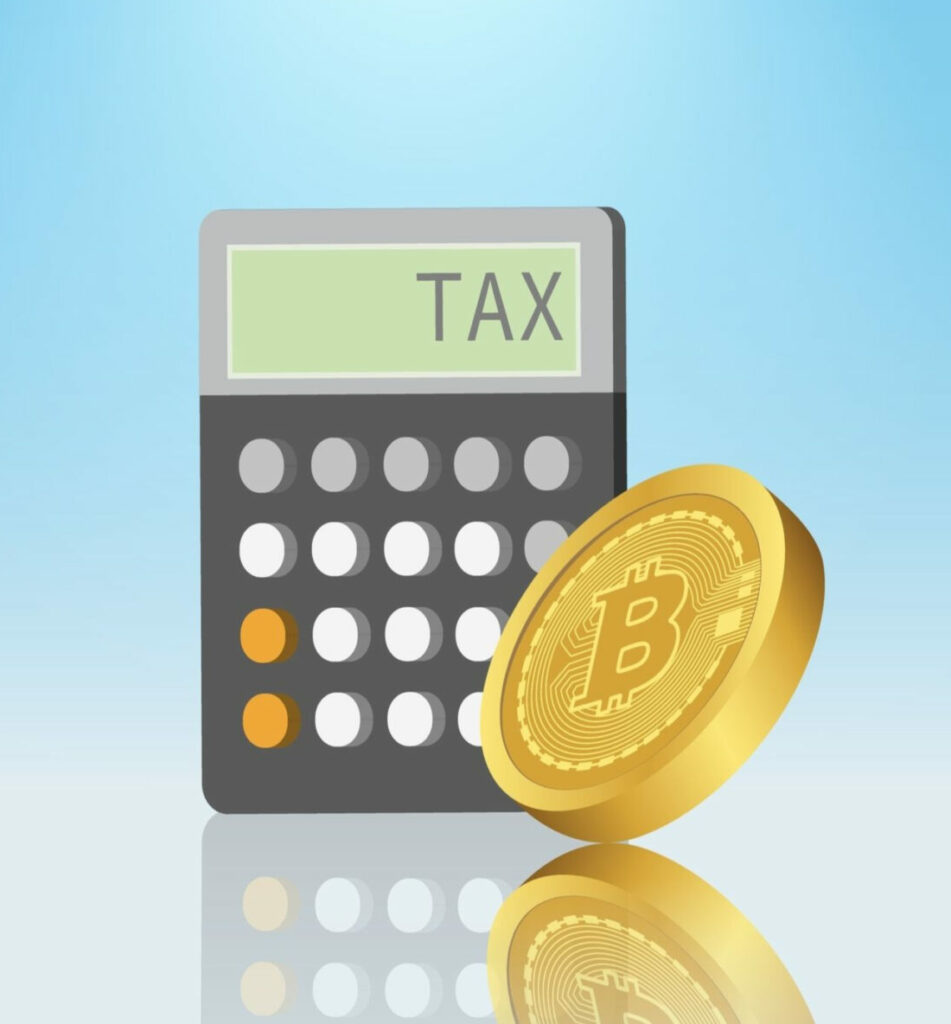Crypto Taxes in Austria: The Complete Guide
Crypto taxes in Austria were pretty simple and straightforward until a recent crypto tax reform came into effect this April.
Due to this recent change, crypto tax regulations in Austria have now split into two paths –
The old taxation rules, which apply to crypto you bought before 28 Feb 2022.
And the new tax reform, which applies to crypto you bought after that.
We’ll go over both and explain and simplify how different crypto transactions may result in different tax consequences.
In this article, you’ll learn:
- How crypto taxes in Austria work
- How to calculate your crypto taxes
- Different crypto transactions and their tax consequences
- Different ways to avoid or reduce your crypto taxes
- How to report your crypto taxes
How Does the Austrian Bundesministerium für Finanzen View Cryptocurrency?
The BMF, short for Bundesministerium für Finanzen, classify crypto as an intangible asset.
How is Crypto Taxed in Austria?
So, echoing what we said before, there are two variations of crypto taxes in Austria.
The first one applies to crypto you bought before 28 Feb 2022. While the second one, the new tax reform, applies to crypto bought after 28 Feb 2022.
Let’s go over both one by one.
Former Crypto Tax Regulations
Formerly, crypto gains were taxed under income tax rates. Therefore, if you dispose of any crypto you bought before 28 Feb 2022, you’ll pay income taxes on your gains. And since you pay income taxes, you can’t offset your losses.
Disposing of crypto includes selling, swapping, or spending crypto. Mining rewards are also taxed under income tax rates.
Additionally, if you hold your crypto for more than a year, you’ll be exempted from paying income taxes.
New Crypto Tax Reform
Under the new tax reform, cryptocurrency will get the same tax treatment as stocks and other asset classes in Austria.
What does this mean?
It means that on any crypto you bought after 28 Feb 2022, you’ll pay a stock tax rate of 27.5% on your gains.
It also means you can offset your losses against your crypto gains and gains from other asset classes. Also, you now have to pay taxes on your long-term gains too.
On a side note, the BMF is offering Austrian taxpayers to pay according to the new tax reform even for crypto bought after 1 Jan 2022. But it’s totally optional, and taxpayers can still pay by old taxation rules on crypto bought before 28 Feb 2022.
This offer is only attractive to high-income individuals. They will save more by paying the 27.5% stock tax rate instead of income taxes.
Exceptions
Usually, most crypto transactions that were taxable before the reform are still taxable now. Only the taxation has changed. Instead of paying income taxes, you’ll be paying a flat 27.5% stock tax rate on your gains.
But there’s one exception.
Under the new crypto tax reform, trading one crypto for another is no longer a taxable event.
Staking and Interest Bearing Crypto Transactions
Rewards you get from interest-bearing crypto activities, like staking, lending, liquidity pools and yield farming, are taxed at a special tax rate of 27.5%, which is not the same as the stock tax rate.
And this goes for both the former and new crypto tax regulations.
The only difference is that under the new tax reform, staking rewards from participating in a PoS consensus algorithm will now be tax-free.
Why?
Because now it’s viewed as more of an acquisition by the BMF.
Check out our guide on staking to learn more about how it works.
So, what does this mean on a technical level?
If you’re staking crypto directly from a non-custodial wallet, the rewards you receive will be tax-free. But any staking rewards from third-party platforms will still be taxed under the special rate of 27.5%.
Also, it’s worth reminding that whether you pay taxes on your staking rewards or not, you must still pay the stock tax rate of 27.5% on the crypto you receive as rewards when you sell them (or dispose of them).
How to Calculate Crypto Taxes in Austria

Calculating crypto taxes in Austria is fairly simple. First, calculate your gains by subtracting the selling price or fair market value (FMV) by the cost basis of your crypto.
Fair Market Value – Cost Basis = Capital Gains
After that, if you’ve bought that crypto before 28 Feb 2022, you’ll pay income taxes on its gains. And if you’ve bought it after that, you’ll pay the stock tax rate of 27.5%.
Let’s look at an example to understand both –
You bought 5 BTC for €8000 on 19 May 2021.
You sell them for €10,000 on 7 June 2022.
You’ll pay income taxes on €2000.
Why? Because you made a profit of €2000 on crypto that you bought before 28 Feb 2022. Hence, the old crypto tax rules apply.
Instead, if you had bought it after 28 Feb 2022, you would be paying 27.5% on your €2000 profit.
Also, on crypto activities where you receive crypto, you’ll pay taxes twice. First, when you receive them. Second, when you sell them. Examples of such crypto activities include mining, staking, lending, etc.
So, in practice, under the old taxation rules, you’ll pay income taxes (or a special tax rate of 27.5% on interest-bearing transactions) first when you receive them and again when you sell them.
Under the new tax reform, you’ll pay the stock tax rate of 27.5% when you receive them (except staking rewards from PoS consensus algorithms) and as well as when you sell them.
So, for example –
If you receive 5 BTC worth $8000, you’ll pay the applicable taxes on $8000 based on the nature of the transaction and date.
And then, if you sell them for $10,000 after a few months, you’ll pay taxes again.
Crypto Taxable Events
Although the above framework is more than enough to find out what and how much tax you owe to the government, the following are some common crypto transactions and their tax consequences for better understanding, plus some additional rules and frameworks.
Spending Crypto to Buy Products/Services
When you’re spending crypto to buy a product or service, you’re essentially disposing of it, triggering a taxable event.
Under the old tax rules, you’ll be paying income taxes whenever you spend your crypto.
Under the new tax reform, you’ll be paying a flat tax rate of 27.5%.
Receiving Income as Crypto
If you receive income as crypto, you’ll be liable to taxes.
Once again, under the old rules, you’ll be liable to income taxes.
Under the new tax reform, you’ll be liable to the stock tax rate of 27.5%.
Also, keep in mind that you must also pay taxes when you spend or sell these received crypto.
Trading One Crypto for Another
Under the old crypto tax rules, trading one crypto for another is taxed under income taxes in Austria.
However, under the new tax reform, trading one crypto for another or swapping crypto is completely tax-free.
Staking Rewards
As we mentioned before, staking rewards are taxed under the special tax rate of 27.5% under the old tax rules.
However, under the new tax reform, staking rewards are tax-free as long as you stake from a PoS consensus algorithm.
Tax-Free Crypto Transactions
The following are some crypto transactions that are totally tax-free.
Buying Crypto
Buying crypto is tax-free under both the new and old crypto taxation rules.
Transferring Crypto Between Wallets
Transferring crypto between wallets doesn’t trigger any tax consequences. It’s tax-free under both the new and old tax rules
Holding Crypto
Holding crypto is also tax-free. In fact, under the old tax rules, if you hold your crypto for more than a year, you’ll pay no taxes even when you sell them.
Gifting Crypto
Unlike some other countries, gifting cryptocurrency in Austria has no tax consequences under both the new and old tax rules.
Donating Crypto
While there are no particular guidelines on donating crypto and its tax consequences but based on existing frameworks, it seems that donating crypto is tax-deductible in Austria.
How to Avoid Crypto Taxes in Austria
It’s important to understand that you can’t totally avoid crypto taxes in Austria . You can only reduce or lower your taxes, but not eliminate them. That being said, here are some ways to do that.
Firstly, the BMF itself provides some relief and tax breaks to Austrian taxpayers.

The Income Tax Allowance
The income tax allowance allows taxpayers to avoid paying income taxes on crypto bought before 28 Feb 2022 only if their income or gains don’t exceed €11,000. You pay no taxes if you earn less than that within a financial year.
Capital Gains Allowance
For crypto bought after 28 Feb 2022, if you earn less than €440 in crypto gains annually, you pay no taxes.
Crypto Tax-Loss Harvesting
Crypto tax-loss harvesting refers to the tax-saving strategy where you sell cryptocurrencies sitting at a loss to offset your gains earned from other crypto or assets. It’s an old popular method to save taxes.
Check out our guide on crypto tax-loss harvesting.
Other than that, please don’t think you can get away with not reporting and paying your crypto taxes in Austria. The BMF will find out sooner or later.
Most of the crypto exchanges in Austria report to the BMF. They have access to your user identity and transactions as well.
So, once they do find out that you’ve been avoiding taxes, you may have to pay hefty penalties or even face criminal charges for tax evasion.
So, the best and most efficient thing to do would be to just report and pay your taxes honestly and accurately.
How to Report Crypto Taxes in Austria
Reporting crypto taxes in Austria is pretty simple. All you have to do is go to FinanzOnline and submit your annual tax return. Make sure to file your taxes before 30 June, as that’s the deadline in Austria.
To make this process easier, make sure you keep all relevant records of your crypto transactions history like the date of purchase, the expenses, the date of sale, the selling price, etc.
To be fair, it can get pretty overwhelming, especially if you’re a day trader or involved in more complicated crypto activities yield farming. That’s why we suggest you use a crypto tax software like Bitcoin.Tax to make reporting taxes easy and seamless.